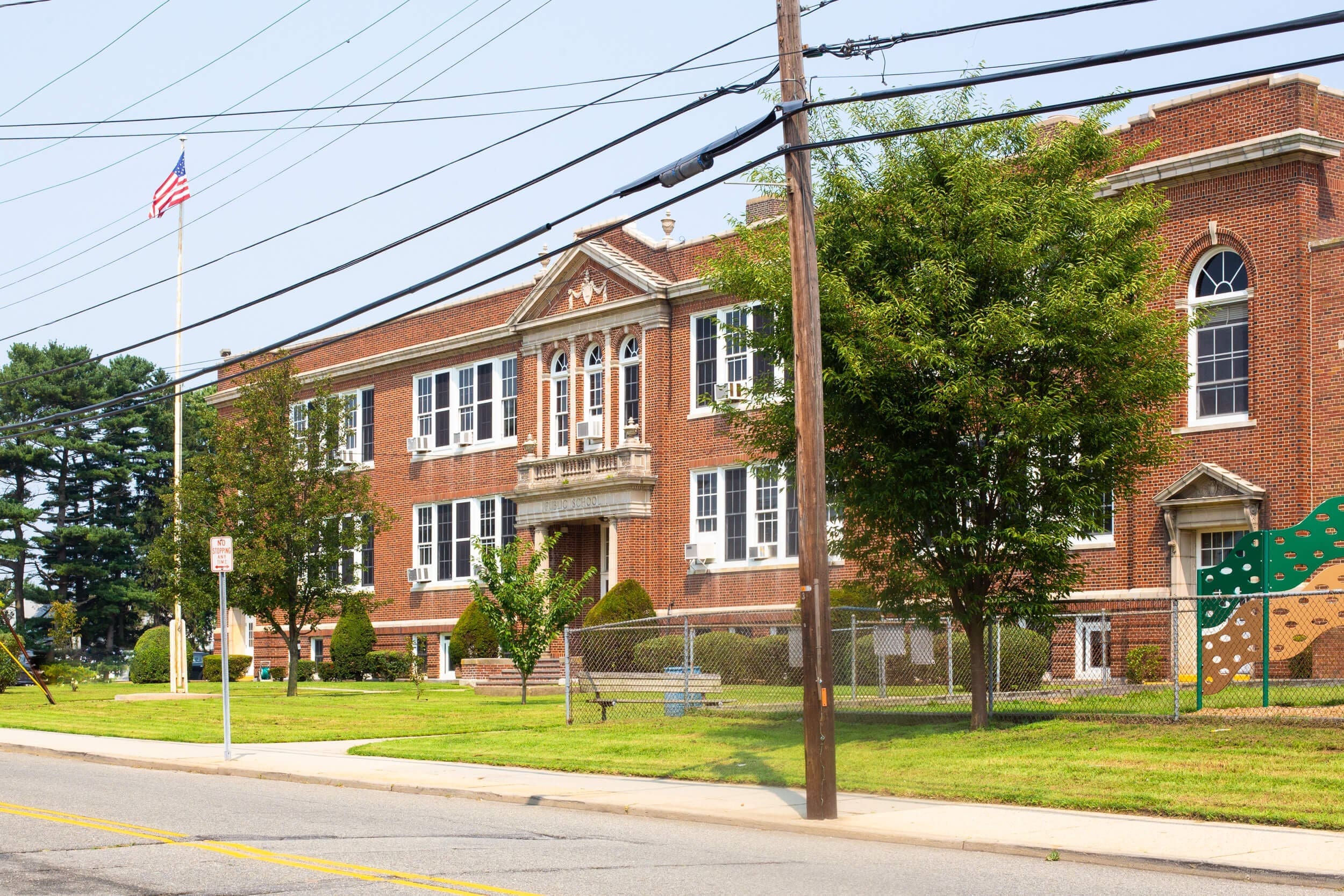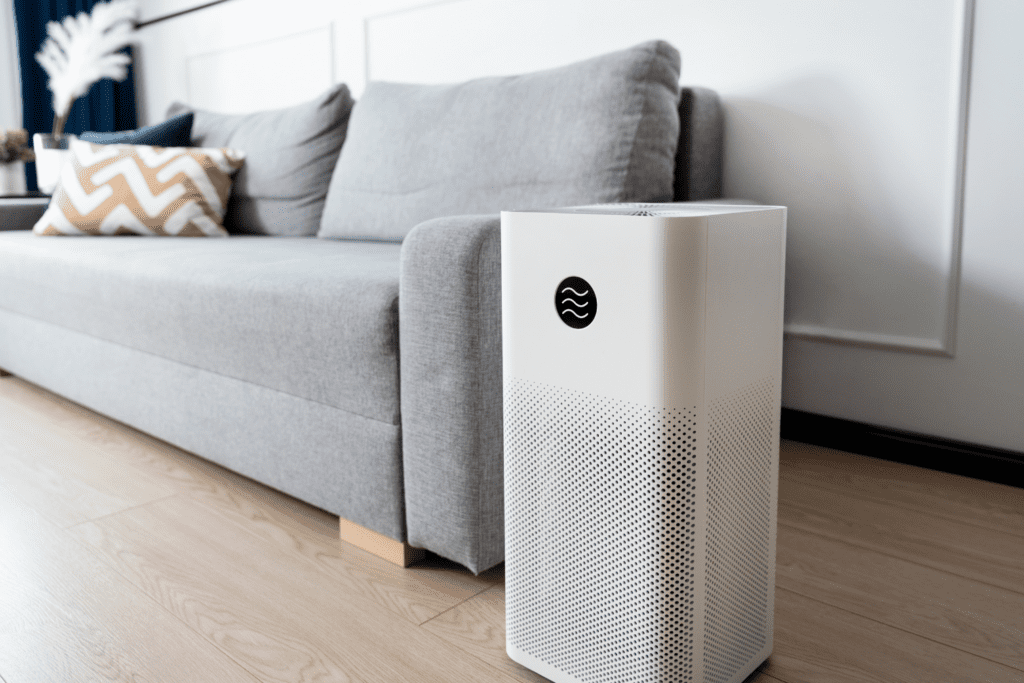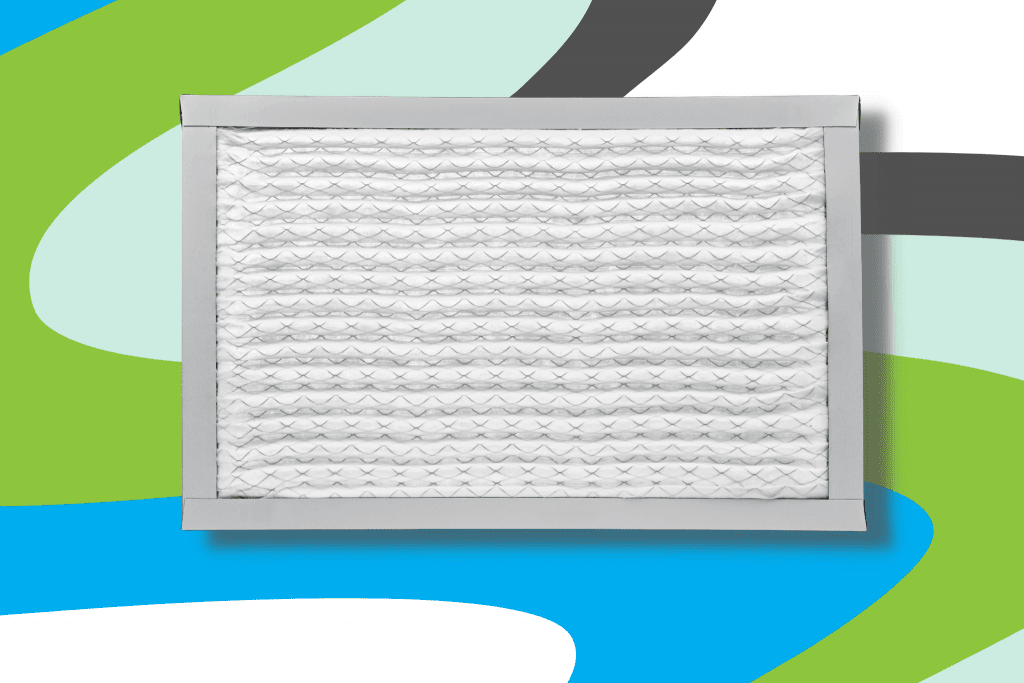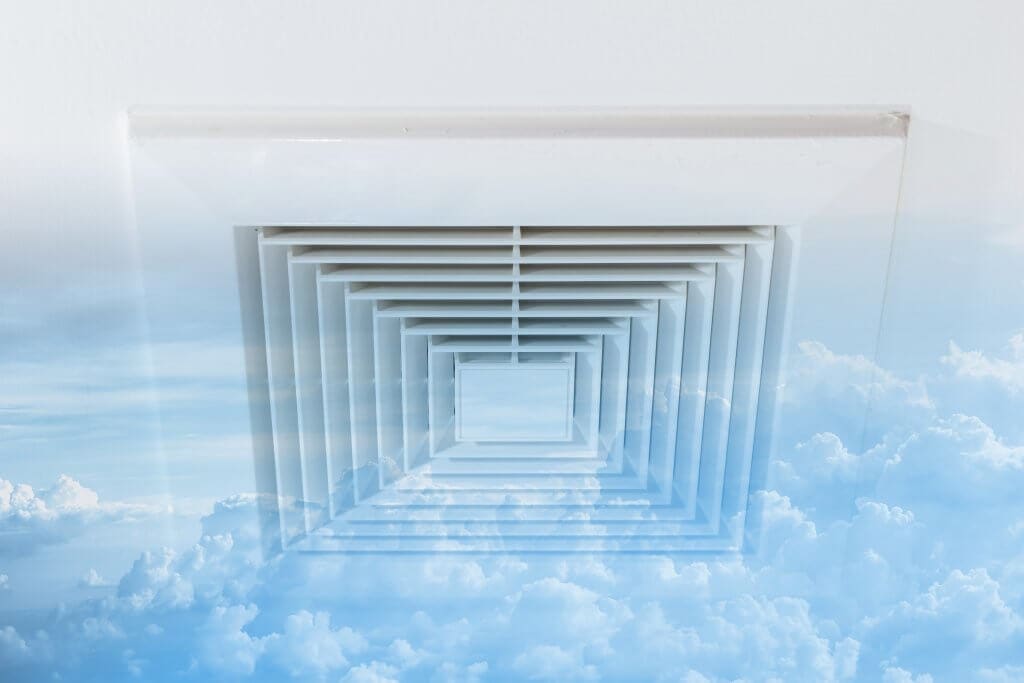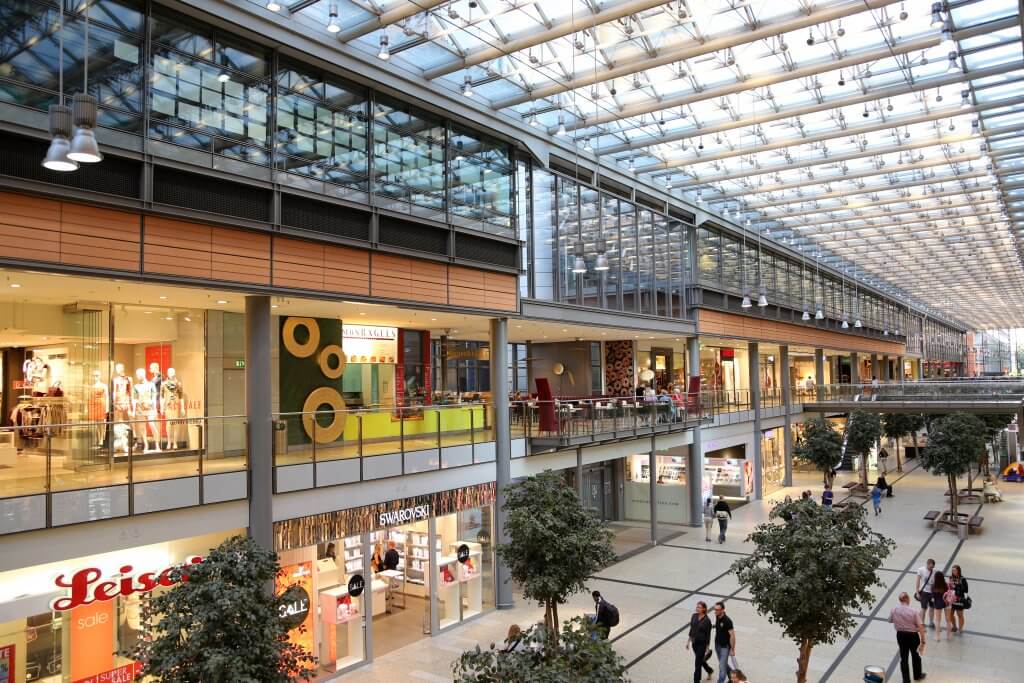School districts across the United States have sought recommendations and expert guidance to properly and safely reopen schools during the pandemic. While the CDC recently released its official guidance document, the Healthy Buildings Program (HBP) at Harvard’s T.H. Chan School of Public Health provided suggestions only a couple months after the pandemic began. First released in June 2020 and updated in November 2020, the Harvard program took an early liberal approach and released a clear pathway to help schools reopen. Their focus? How to turn school buildings into healthy school buildings.
Harvard’s Healthy Buildings Program on Reopening Schools
The Healthy Buildings Program is a team of experts focused on “Healthy Buildings and exposure and risk science.” They focus on combining building science and health science to target areas of concern including water quality, noise levels, security, lighting, and of course–air quality and the many possible control strategies.
When schools first closed in March of 2020, the HBP was one of the first organizations to publish school reopening suggestions. Only two months after initial closures, the program honed in on educating about creating healthy school buildings and indoor environments. Their take is that schools can open and operate as safe healthy spaces if risk reduction strategies are followed. The HBP’s stance also stemmed from the idea that reopening and keeping schools open should be a top priority because closed schools results in “massive, long-term individual and societal costs.” Based on science and research, the program explained then and explains now how in-person instruction is possible with layered mitigation strategies. The HBP sums up its recommendations and control strategies in five categories:
1. Healthy Classrooms – prioritizing safe in-room practices such as masks, hand washing and physical distancing
2. Healthy Buildings – clean indoor air via improved ventilation, filtration and other IAQ improvements with a specific goal to target ACH
3. Healthy Policies – creating a school culture of health and safety that encourages students to stay home if sick, supports remote learning options, protects students and staff, etc.
4. Healthy Schedules – suggestions to create safe transportation methods, transition periods and lunchtime
5. Healthy Activities – modifying activities like recess, sports, elective and gym classes
What is ACH?
A key goal outlined in HBP’s suggestions is to improve ACH, or air changes per hour. They suggest a goal of 4-6 air changes per hour for classroom settings. ACH is measured as the total amount of clean air entering a room divided by total room volume. Clean air options include incoming fresh air via ventilation, filtered recirculated air and/or purified air. Air exchange rates are a helpful tool to gauge ventilation and overall indoor air quality. As a rule of thumb: higher ACH value = better indoor ventilation.
These 4-6 air changers per hour can be achieved through any combination of ventilation+filtration. We recommend this prioritization:
— Joseph Allen (@j_g_allen) February 15, 2021
1: increased outdoor air
2: better filters on recirc air (MERV13)
3: portable air cleaners w/ HEPA
15/n
As environmental health professor and Director of Harvard’s Healthy Buildings Program Joseph Allen suggests in the above tweet–providing schools with a measurable ACH goal is important. It sets a clear air exchange standard to meet for reopening.
Transforming Schools Into Healthy Buildings in 5 Steps
While HBP’s healthy school suggestions span five varied school life categories, as a Healthy Buildings Program, their focus is understandably on creating healthier school buildings. And as indoor air quality experts and advocates, so is ours. Whether you’re a teacher or faculty member, school administrator, parent or student–it’s helpful to understand the options available to improve school indoor air quality. We break down HBP’s recommendations to create healthy school buildings in five digestible steps.
Step One: Improve Ventilation
Good indoor ventilation is practically a given at this point in pandemic discussions and reopening plans. More than likely, you’ve heard someone somewhere discuss the benefits of ventilation. The ultimate purpose is to increase the amount of fresh outdoor air indoors. Fresh air not only replaces stale air and improves circulation, it also helps dilute indoor pollutants. That includes airborne virus particles, which is how ventilation helps reduce infection transmission.
Hold Class Outdoors
This is the ideal fresh air method recommended by HBP. Of course, they and we acknowledge that holding class outdoors is not quite a feasible plan. At least not all day, year-round.
Natural Ventilation
Natural ventilation simply means increasing the amount of incoming fresh air by opening doors and windows. In school buildings this also means opening roof ventilators. Natural ventilation is a helpful and easy step to improve overall indoor ventilation. However, it also means being wary of outdoor air quality, air pressure changes and weather factors. If no other solutions are possible, then natural ventilation is a must. But if better options are available, natural ventilation is not necessarily the go-to indoor air quality solution.
Localized Ventilation + Bathroom Hygiene
Another type of ventilation is spot ventilation. AKA localized exhaust fans such as the stove fan in the kitchen or bathroom fans. HBP’s suggestion is to keep exhaust fans in the bathroom running the entire day to help with bathroom hygiene.
Mechanical Ventilation
Mechanical ventilation is the clear ventilation winner. Especially for schools. Mechanical ventilation is forcibly bringing outdoor air in. This is done through an additional ventilation attachment that installs directly into the school HVAC system(s) and distributes fresh air throughout the entire building.
With mechanical ventilation, it’s important to maximize the amount of fresh air entering the building. In fact, it’s crucial enough for creating a healthy school building that HBP even says to maximize fresh outdoor air regardless of weather conditions. Translation: students, teachers and staff should adjust their clothing before adjusting ventilation settings for comfort purposes.
IAQ.Works tip: maximum incoming fresh air with temperature regulation is possible with newer ventilation systems such as ERVs and HRVs. These systems match the indoor air temperature during the air circulation process without mixing the clean incoming fresh air and outgoing contaminated air. HBP’s guidance does note the efficiency of these systems and suggests such ventilation upgrades are an important future step for schools.
Finally buildings often choose to mix fresh air with recirculated air either to save money or for energy-efficiency purposes. HBP again suggests to instead maximize fresh air and limit recirculated air. They also recommend to keep mechanical ventilation systems running during the pre and post school hours when people are still in the building.
Ventilate!!
— IAQ.Works (@IaqWorks) March 6, 2021
Upgrading HVAC systems to include > Mechanical Ventilation < that actively pump in fresh outdoor air is a helpful long-term AND short-term solution! #ventilation #iaq #schoolsreopening https://t.co/gLxXPsM9T2
Step Two: Improve Filtration
Filtration is another important healthy school building focus. It’s also a helpful indoor air quality upgrade. Air filters help capture and eliminate harmful indoor pollutants. There are a plethora of unsavory particles in our indoor air from dust and pollen to VOCs and mold to the current focus: germs and virus particles. Filters help curb transmission because it reduces the number of viral particles. Quite literally filtering them out. Thus, preventing infectious particles from spreading indoors, building up and recirculating through the building.
MERV-13 Air Filters
Harvard’s program suggests using at a minimum–MERV-13 air filters. And if possible to exceed MERV-13 without compromising airflow, then to use the highest MERV rated air filter. MERV, or minimum efficiency reporting value is simply a rating system that measures an air filter’s efficacy. It runs on a scale from 1-16. The higher the rating, the better the filter is at both filtering smaller sized particles and more efficiently filtering larger particles.
MERV-13 is widely regarded as the ideal air filter for residential use (it’s our go-to suggestion!) and a great choice for buildings. Whether your school’s HVAC system should upgrade to MERV-13 or a higher MERV level depends on the specific HVAC system. (That’s why HPB says if it’s possible.) Their official terms are to choose the filter that works best with the system “based on the pressure drop and system capacities.” An HVAC or IAQ professional can easily determine the best filter option for a school’s HVAC system. But the main takeaway is–make sure your or your child’s school is at least upgrading air filters to MERV-13.
To improve building filtration, it’s also important to routinely check and replace air filters throughout the school. Clogged air filters results in reduced air quality and it means the HVAC system has to work harder. Also, make sure to regularly verify a tight seal and filter fit. Upgrading filter level and ensuring proper filtration are one of the easiest methods to create a healthier school building.
Step Three: Verify Building Ventilation and Filtration
According to HBP’s recommendations, ventilation and filtration are arguably the two most important indoor air quality control solutions. Likely for this reason, they also suggest to verify school building ventilation and filtration through professional testing. HVAC contractors and IAQ experts across the country have been in high demand this past year because so many need thorough HVAC system assessments. Expert testing is a helpful step that verifies the ventilation and filtration improvements were completed correctly and are working to improve indoor air quality.
This is also where regular HVAC system maintenance comes into play. HBP’s suggestion is to check HVAC system(s) performance multiple times during the school year. Maintenance is not only preventative, but a crucial step to ensure that classrooms are safe and school buildings have healthy indoor air quality during the pandemic.
Step Four: Consider Air Purification
The Healthy Buildings Program suggestions includes purification as a supplemental indoor air quality solution. Air purifiers or air cleaners also work to reduce the number of indoor air pollutants, providing cleaner indoor air. HBP suggests portable air cleaners with HEPA level filtration for classrooms, citing single-room units as the most effective air cleaning device for smaller spaces. For larger spaces, there are industrial-sized devices to consider. Our take: the industrial-sized devices also called in-duct systems or whole-building air purification are incredibly beneficial solutions. They improve school air quality as a whole because they work in tandem with the HVAC system, similar to how a mechanical ventilation system operates throughout the entire building.
Step Five: Consider Other Air Quality Control Solutions
In the current conversation about school air quality improvements, ventilation, filtration and purification largely dominate the conversation. And for good reason–they drastically improve air quality and create safer, healthier indoor spaces. Harvard’s Healthy Building Program also focused their recommendations on ventilation and filtration. However, they do suggest addressing and improving other air quality concerns as well.
Humidity Control
Another less talked about school indoor air quality solution is humidity control. Their suggestion: indoor relative humidity levels should remain between 40 and 60%. This is the optimal humidity range for indoor spaces. It’s the ideal range because it limits biological pollutant growth (e.g. dust mites and mold), maintains good indoor moisture levels without excess dampness and perhaps most important–it protects against respiratory viruses. Humans are best at fighting respiratory illnesses in mid-range humidity levels. This means maintaining good relative humidity also helps reduce infection.
Whole-building humidity control solutions are available. As in, humidifiers and dehumidifiers that install directly into the HVAC system and regulate building moisture levels. Choosing between a humidifier or dehumidifier depends on the school’s location, layout, local climate and pressing IAQ concerns.
IAQ solutions can help students return to in-person instruction. (And they already have!) Advocate for #IAQ upgrades to be a part of your or your child's school's mitigation strategies. https://t.co/whTMmzCP0J
— IAQ.Works (@IaqWorks) March 13, 2021
Ultraviolet Light
Ultraviolet light is an alternative air cleaning option. This technology uses low-wavelength ultraviolet light to eliminate viruses and harmful indoor pollutants. Contrary to popular belief, this does not mean installing UV lights in classrooms. Rather, they are installed in the HVAC system itself or building ductwork. HBP describes this as an upper room solution or upper airspace technology. UV technology targets air as it flows through the ductwork and HVAC system and before it recirculates. Note: UV light technology is often included in whole-home/whole-building air purification solutions.
Healthy Schools
Transforming a school from a building into a healthy building may seem complex, but really creating healthier school air quality is just five steps. The many solutions and options available on the market for HVAC and IAQ upgrades all fall into these five suggestions.
Harvard’s Healthy Buildings Program tips for creating healthy buildings does include a few additional suggestions that aren’t targeted at improving air quality. These include recommendations such as using plexiglass, installing touchless technology and keeping surfaces clean. And of course–the program also includes four other healthy school areas to target.
Whichever IAQ option (or options!) you suggest for a healthier indoor learning and teaching space, choosing to intervene and focus on air quality is a crucial decision. Keep in mind that focusing on reaching 4-6 air changes per hour is a solid way to provide a healthier, cleaner and safer school building.
